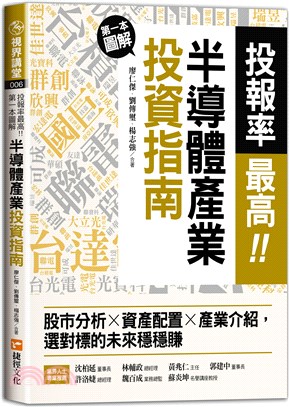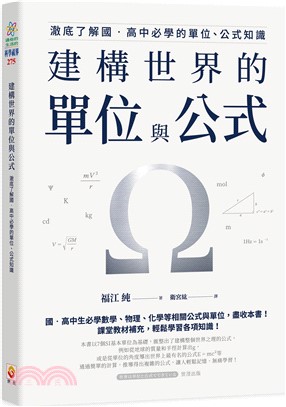計算機組成與設計:硬體/軟件介面(英文版‧第5版‧亞洲版)(簡體書)
- ISBN13:9787111453161
- 出版社:機械工業出版社
- 作者:(美)David Patterson
- 裝訂:平裝
- 版次:5
- 出版日:2014/02/14
商品簡介
因為正確理解現代硬件對于實現好的性能和能效至關重要,所以本版在全書中增加了一個新的實例“GoingFaster”,以演示非常有效的優化技術。本版還新增了一個關于計算機體系結構“八大理念”的討論。
與前幾版一樣,本書采用MIPS處理器來展示計算機硬件技術、匯編語言、計算機算術、流水線、存儲器層次結構以及I/O等基本功能。
作者簡介
John L.Hennessy 斯坦福大學校長,IEEE和ACM會士,美國國家工程研究院院士及美國科學藝術研究院院士。Hennessy教授因為在RISC技術方面做出了突出貢獻而榮獲2001年的Eckert-Mauchly獎章,他也是2001年Seymour Cray計算機工程獎得主,并且和David A.Patterson分享了2000年Johnvon Neumann獎。David A.Patterson加州大學伯克利分校計算機科學系教授,美國國家工程院院士,美國國家科學院院士,IEEE和ACM會士。他因為教學成果顯著而榮獲了加州大學的杰出教學獎、ACM的Karlstrom獎、IEEE的Mulligan教育獎章和本科生教學獎。因為對RISC技術的貢獻,他獲得lEEE的技術成就獎和ACM的Eckert-Mauchly獎;而在RAID方面的貢獻為他贏得了IEEE Johnson信息存儲獎。他還和John L. Hennessy分享了IEEE John von Neumann獎章和NEC C&C獎金。Patterson還是美國藝術與科學院院士、美國計算機歷史博物館院士,并被選入硅谷工程名人堂。Patterson身為美國總統信息技術顧問委員會委員,還曾擔任加州大學伯克利分校電子工程與計算機科學系計算機科學分部主任、計算機研究協會(CRA)主席和ACM主席。這一履歷使他榮獲了ACM和CRA頒發的杰出服務獎。
名人/編輯推薦
討論并強調計算機體系結構的“八大理念”——Performance via Parallelism;Performance via Pipelirring;Performa rice via Prediction;Design for Moore's Law;Hierarchy of Memories;Absttraction to Simplify Design;Make the Common Case Fast;Dependability via Redundancy。
全面更新和改進了練習。
目次
About the Author xiii
CHAPTERS
1 Computer Abstractions and Technology 2
1.1 Introduction 3
1.2 Eight Great Ideas in Computer Architecture 11
1.3 Below Your Program 13
1.4 Under the Covers 16
1.5 Technologies for Building Processors and Memory 24
1.6 Performance 28
1.7 The Power Wall 40
1.8 The Sea Change: The Switch from Uniprocessors to Multiprocessors 43
1.9 Real Stuff: Benchmarking the Intel Core i7 46
1.10 Fallacies and Pitfalls 49
1.11 Concluding Remarks 52
1.12 Historical Perspective and Further Reading 54
1.13 Exercises 54
2 Instructions: Language of the Computer 60
2.1 Introduction 62
2.2 Operations of the Computer Hardware 63
2.3 Operands of the Computer Hardware 66
2.4 Signed and Unsigned Numbers 73
2.5 Representing Instructions in the Computer 80
2.6 Logical Operations 87
2.7 Instructions for Making Decisions 90
2.8 Supporting Procedures in Computer Hardware 96
2.9 MIPS Addressing for 32-Bit Immediates and Addresses 106
2.10 Parallelism and Instructions: Synchronization 116
2.11 Translating and Starting a Program 118
2.12 A C Sort Example to Put It All Together 126
2.13 Advanced Material: Compiling C 134
2.14 Real Stuff: ARMy7 (32-bit) Instructions 134
2.15 Real Stuff: x86 Instructions 138
2.16 Real Stuff: ARMv8 (64-bit) Instructions 147
2.17 Fallacies and Pitfalls 148
2.18 Concluding Remarks 150
2.19 Historical Perspective and Further Reading 152
2.20 Exercises 153
3 Arithmetic for Computers 164
3.1 Introduction 166
3.2 Addition and Subtraction 166
3.3 Multiplication 171
3.4 Division 177
3.5 Floating Point 184
3.6 Parallelism and Computer Arithmetic: Subword Parallelism 210
3.7 Real Stuff: Streaming SIMD Extensions and Advanced Vector Extensions in x86 212
3.8 Going Faster: Subword Parallelism and Matrix Multiply 213
3.9 Fallacies and Pitfalls 217
3.10 Concluding Remarks 220
3.11 Historical Perspective and Further Reading 224
3.12 Exercises 225
4 The Processor 230
4.1 Introduction 232
4.2 Logic Design Conventions 236
4.3 Building a Datapath 239
4.4 A Simple Implementation Scheme 247
4.5 An Overview ofPipelining 260
4.6 Pipelined Datapath and Control 274
4.7 Data Hazards: Forwarding versus Stalling 291
4.8 Control Hazards 304
4.9 Exceptions 313
4.10 Parallelism via Instructions 320
4.11 Real Stuff: The ARM Cortex-A8 and Intel Core i7 Pipelines 332
4.12 Going Faster: Instruction-Level Parallelism and Matrix Multiply 339
4.13 Advanced Topic: An Introduction to Digital Design Using a Hardware
Design Language to Describe and Model a Pipeline and More Pipelining
Illustrations 342
4.14 Fallacies and Pitfalls 343
4.15 CondudingRemarks 344
4.16 Historical Perspective and Further Reading 345
4.17 Exercises 345
5 Large and Fast: Exploiting Memory Hierarchy 360
5.1 Introduction 362
5.2 Memory Technologies 366
5.3 The Basics of Caches 371
5.4 Measuring and Improving Cache Performance 386
5.5 Dependable Memory Hierarchy 406
5.6 Virtual Machines 412
5.7 Virtual Memory 415
5.8 A Common Framework for Memory Hierarchy 442
5.9 Using a Finite-State Machine to Control a Simple Cache 449
5.10 Parallelism and Memory Hierarchies: Cache Coherence 454
5.11 Parallelism and Memory Hierarchy: Redundant Arrays of Inexpensive Disks 458
5.12 Advanced Material: Implementing Cache Controllers 458
5.13 Real Stuff: The ARM Cortex-A8 and Intel Core i7 Memory Hierarchies 459
5.14 Going Faster: Cache Blocking and Matrix Multiply 463
5.15 Fallacies and Pitfalls 466
5.16 GoncludingRemarks 470
5.17 Historical Perspective and Further Reading 471
5.18 Exercises 471
6 Parallel Processors from Client to Cloud 488
6.1 Introduction 490
6.2 The Difficulty of Creating Parallel Processing Programs 492
6.3 SISD, MIMD, SIMD, SPMD, and Vector 497
6.4 Hardware Multithreading 504
6.5 Multicore and Other Shared Memory Multiprocessors 507
6.6 Introduction to Graphics Processing Units 512
6.7 Clusters, Warehouse Scale Computers, and Other Message-Passing Multiprocessors 519
6.8 Introduction to Multiprocessor Network Topologies 524
6.9 Communicating to the Outside World: Cluster Networking 527
6.10 Multiprocessor Benchmarks and Performance Models 528
6.11 Real Stuff: Benchmarking Intel Core i7 versus NVIDIA Tesla GPU 538
6.12 Going Faster: Multiple Processors and Matrix Multiply 543
6.13 Fallacies and Pitfalls 546
6.14 Concluding Remarks 548
6.15 Historical Perspective and Further Reading 551
6.16 Exercises 551
APPENDICES
A Assemblers, Linkers, and the SPiM Simulator A-2
A.1 Introduction A-3
A.2 Assemblers A-IO
A.3 Linkers A-18
A.4 Loading A-19
A.5 Memory Usage A-20
A.6 Procedure Call Convention A-22
A.7 Exceptions and Interrupts A-33
A.8 Input and Output A-38
A.9 SPIM A-40
A.10 MIPS R2000 Assembly Language A-45
A.11 Concluding Remarks A-81
A.12 Exercises A-82
B TH-2 High Performance Computing System B-2
B.1 Introduction B-3
B.2 Compute Node B-3
B.3 The Frontend Processors B-5
B.4 The Interconnect B-6
B.5 The Software Stack B-7
B.6 LINPACK Benchmark Run (HPL) B-7
B.7 Concluding Remarks B-8
F Networks-on-Chip F-2
F.1 Introduction F-3
F.2 Communication Centric Design F-3
F.3 The Design Space Exploration ofNoCs F-5
F.4 Router Micro-architecture F-8
F.5 Performance Metric F-9
F.6 Concluding Remarks F-9
Index I-1
主題書展
更多主題書展
更多書展本週66折
您曾經瀏覽過的商品
購物須知
大陸出版品因裝訂品質及貨運條件與台灣出版品落差甚大,除封面破損、內頁脫落等較嚴重的狀態,其餘商品將正常出貨。
特別提醒:部分書籍附贈之內容(如音頻mp3或影片dvd等)已無實體光碟提供,需以QR CODE 連結至當地網站註冊“並通過驗證程序”,方可下載使用。
無現貨庫存之簡體書,將向海外調貨:
海外有庫存之書籍,等候約45個工作天;
海外無庫存之書籍,平均作業時間約60個工作天,然不保證確定可調到貨,尚請見諒。
為了保護您的權益,「三民網路書店」提供會員七日商品鑑賞期(收到商品為起始日)。
若要辦理退貨,請在商品鑑賞期內寄回,且商品必須是全新狀態與完整包裝(商品、附件、發票、隨貨贈品等)否則恕不接受退貨。

























